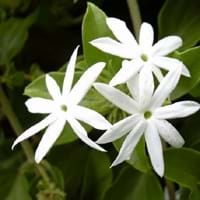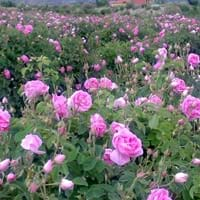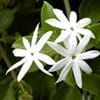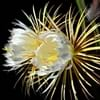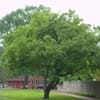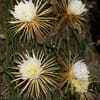Life Span
Perennial
Perennial
Type
Flowering Plants, Shrubs, Vines
Flowering Plants, Ornamental Plants, Perennial
Origin
Southern Africa
Hybrid origin
Types
Arabian jasmine, Sambac jasmine, Gold Coast jasmine
Summer Damasks, Autumn Damasks
Habitat
Forest edges, Hillside, Woods
gardens
USDA Hardiness Zone
Not Available
Not Available
AHS Heat Zone
12-10
Not Available
Sunset Zone
8, 9, 13, 14, 15, 16, 17, 18, 19, 20, 21, 22, 23, 24
Not Available
Habit
Upright/Erect
Clump-Forming
Flower Color
Pale White, White
Pink
Flower Color Modifier
Not Available
Bicolor
Fruit Color
Black, Brown
Non Fruiting Plant
Leaf Color in Spring
Gray Green
Green, Gray Green
Leaf Color in Summer
Gray Green
Dark Green, Green
Leaf Color in Fall
Gray Green
Green, Gray Green
Leaf Color in Winter
Gray Green
Dark Green, Green
Leaf Shape
Oblovate
Pinnate
Plant Season
Spring, Summer, Fall, Winter
Spring, Summer, Fall
Sunlight
Full Sun, Partial Sun
Full Sun, Partial Sun
Growth Rate
Medium
Medium
Type of Soil
Loam, Sand
Loam, Sand
The pH of Soil
Acidic, Neutral, Alkaline
Acidic, Neutral
Soil Drainage
Well drained
Well drained
Bloom Time
Early Spring, Spring, Late Winter
Spring, Late Spring, Early Summer, Summer, Late Summer, Early Fall, Fall
Repeat Bloomer
No
Not Available
Tolerances
Drought
Drought
Where to Plant?
Container
Container, Ground, Pot
How to Plant?
Seedlings, Stem Planting
Cuttings
Plant Maintenance
Medium
Medium
Watering Requirements
Do Not over Water, Requires regular watering
Average Water Needs
In Summer
Lots of watering
Lots of watering
In Spring
Moderate
Moderate
In Winter
Average Water
Average Water
Soil pH
Acidic, Neutral, Alkaline
Acidic, Neutral
Soil Type
Loam, Sand
Loam, Sand
Soil Drainage Capacity
Well drained
Well drained
Sun Exposure
Full Sun, Partial Sun
Full Sun, Partial Sun
Pruning
Proper mowing practices are necessary, Prune after flowering
Remove damaged leaves, Remove dead branches, Remove dead leaves
Fertilizers
Compost, Fertilize the soil before planting, General garden fertilizer
All-Purpose Liquid Fertilizer
Pests and Diseases
Caterpillars, Leaf curl, Mildew
Beetles, Black Spot, Caterpillars, Downy mildew, Mosaic viruses, Powdery mildew, Rust, Scale insects, Thripes
Plant Tolerance
Humidity, Salt and Soil Compaction, Shade areas
Drought
Flower Petal Number
Single
Double
Edible Fruit
No
Not Available
Foliage Texture
Bold
Medium
Foliage Sheen
Matte
Glossy
Invasive
No
Not Available
Self-Sowing
No
Not Available
Attracts
Butterflies, Hummingbirds
Birds, Butterflies
Allergy
Chest tightness, Nausea, Vomiting
Rash
Aesthetic Uses
Hanging Basket, small hedge
Showy Purposes
Beauty Benefits
Good for the Scalp, Makes teeth white, Provides herbal hair care, Skin cleanser
Not Available
Environmental Uses
Air purification, Indoor Air Purification, Insect Repellent
Air purification
Medicinal Uses
Fever, Kidney problems, Urinary tract problems
Not Available
Part of Plant Used
Flowers, Root
Flowers
Other Uses
Basketary, Cosmetics, Oil is used for aromatherapy, Oil is used in mosquito repellents, Oil is used in perfume, soaps, creams, etc., Used for fragrance
Oil is used in perfume, soaps, creams, etc.
Used As Indoor Plant
Yes
Yes
Used As Outdoor Plant
Yes
Yes
Garden Design
Container, Feature Plant, Foundation, Hedges, Mixed Border, Rock Garden, Wall, Tropical
Container, Cutflower, Feature Plant, Foundation, Mixed Border, Topiary / Bonsai / Espalier
Botanical Name
ALOE arborescens
Rosa × damascena
Common Name
Hydrangea or hortensia
Damask rose, rose of castile
In Hindi
चमेली
जामदानी गुलाब
In German
Jasmin
Damaszener-Rosen
In French
Jasmin
Le rosier de Damas
In Spanish
Hortensia
Rosa de Damasco, Rosa de Castilla
In Greek
υδραγεία
δαμασκηνό τριαντάφυλλο
In Portuguese
Jasmin
rosa damascena
In Polish
Jasmin
Róża damasceńska
In Latin
Jasmin
surrexit Damascum
Phylum
Magnoliophyta
Magnoliophyta
Class
Magnoliopsida
Magnoliopsida
Order
Scrophulariales
Rosales
Clade
Angiosperms, Asterids
Not Available
Tribe
Jasmineae
Not Available
Subfamily
Not Available
Not Available
Number of Species
Not Available
Importance of Jasmine and Damask Rose
Want to have the most appropriate plant for your garden? You might want to know the importance of Jasmine and Damask Rose. Basically, these two plants vary in many aspects. Compare Jasmine and Damask Rose as they differ in many characteristics such as their life, care, benefits, facts, etc. Every gardener must at least have the slightest clue about the plants he wants to plant in his garden. Compare their benefits, which differ in many ways like facts and uses. The medicinal use of Jasmine is Fever, Kidney problems and Urinary tract problems whereas of Damask Rose is Not Available. Jasmine has beauty benefits as follows: Good for the Scalp, Makes teeth white, Provides herbal hair care and Skin cleanser while Damask Rose has beauty benefits as follows: Good for the Scalp, Makes teeth white, Provides herbal hair care and Skin cleanser.
Compare Facts of Jasmine vs Damask Rose
How to choose the best garden plant for your garden depending upon its facts? Here garden plant comparison will help you to solve this query. Compare the facts of Jasmine vs Damask Rose and know which one to choose. As garden plants have benefits and other uses, allergy is also a major drawback of plants for some people. Allergic reactions of Jasmine are Chest tightness, Nausea and Vomiting whereas of Damask Rose have Rash respectively. Having a fruit bearing plant in your garden can be a plus point of your garden. Jasmine has no showy fruits and Damask Rose has no showy fruits. Also Jasmine is not flowering and Damask Rose is not flowering . You can compare Jasmine and Damask Rose facts and facts of other plants too.
